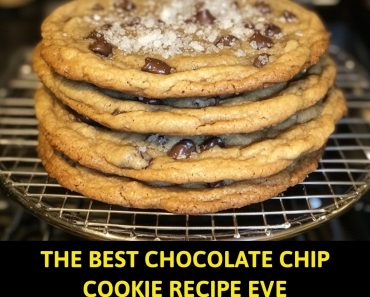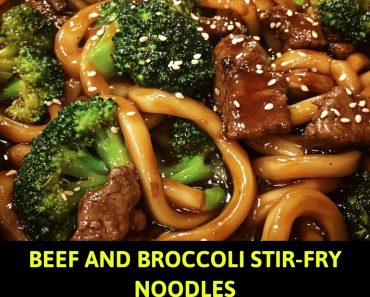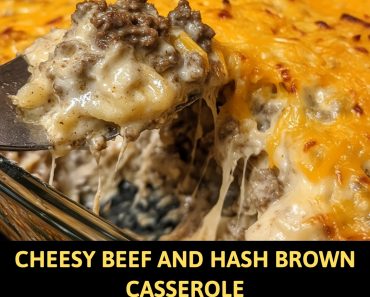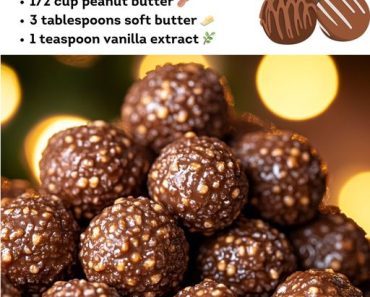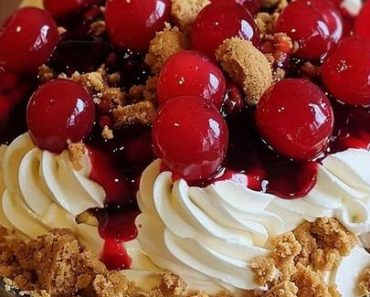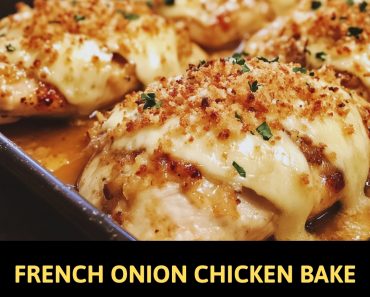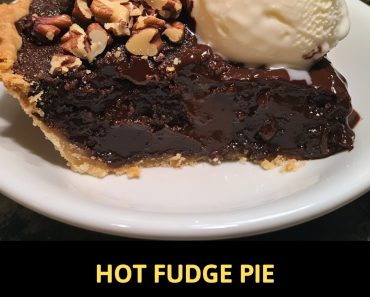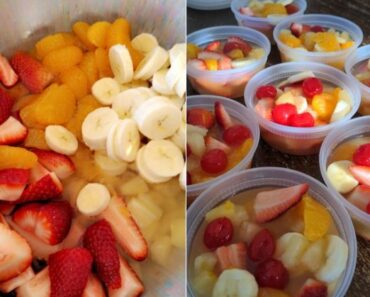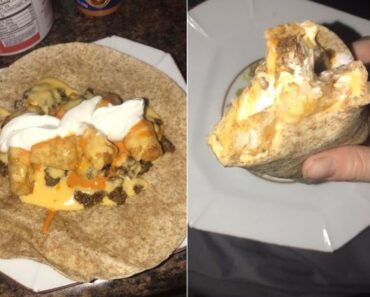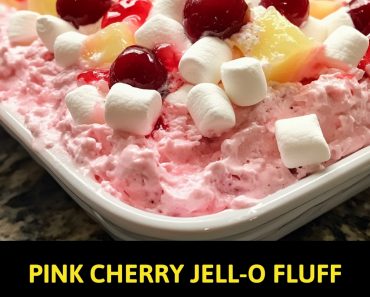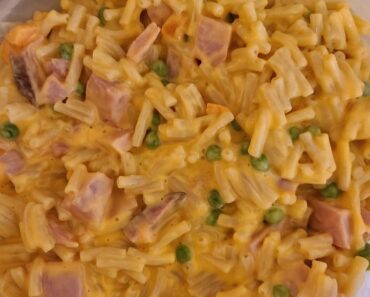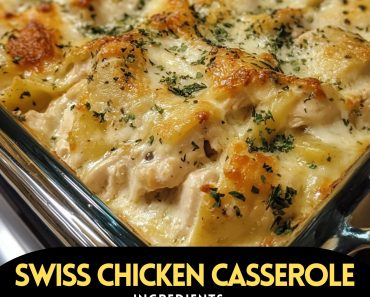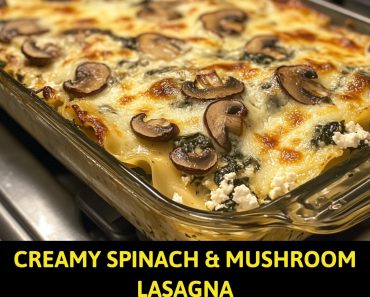
Pumpkin Caramel Cheesecake Recipe
There’s something inherently cozy and comforting about the fusion of pumpkin and caramel. This Pumpkin Caramel Cheesecake is the perfect dessert for autumn or any time you’re craving something creamy, spiced, and utterly decadent. The smooth, rich texture of the cheesecake with the warmth of pumpkin and spices, combined with the sweetness of caramel, will leave you and your guests in awe. It’s a showstopper for the holidays or any gathering, yet it’s surprisingly simple to prepare.
Ingredients Overview
Graham Cracker Crumbs: These form the buttery, slightly sweet, and crunchy base for the cheesecake, providing the perfect textural contrast to the creamy filling.
Sugar: Both granulated sugar and caramel sauce add the necessary sweetness while balancing the tang of the cream cheese and the earthiness of the pumpkin.
Butter: Melted butter binds the graham cracker crust together, ensuring it holds its shape while also adding richness.
Cream Cheese: The star of the cheesecake! Make sure it’s softened for easy blending. The cream cheese offers the signature velvety smooth texture.
Pumpkin: The canned pumpkin provides a delightful autumnal flavor and gives the cheesecake its gorgeous orange hue.
Eggs: Essential for binding the cheesecake together and giving it structure. The eggs also add a luscious creaminess to the filling.
Vanilla Extract: Enhances the flavor profile, complementing both the pumpkin and the spices.
Spices (Cinnamon, Nutmeg, Cloves): These warming spices are what give this cheesecake its unmistakable “pumpkin pie” essence, infusing it with a cozy, autumnal aroma.
Caramel Sauce: This indulgent finishing touch adds a delightful, sticky sweetness when drizzled over the top, making each bite heavenly.
Step-by-Step Cooking Instructions
Step 1: Prepare the Crust
Preheat your oven to 350°F. In a medium bowl, mix the graham cracker crumbs, 1/4 cup of sugar, and melted butter until the mixture resembles wet sand. Press the mixture evenly onto the bottom of a 9-inch springform pan to form a firm base. Set aside.
Step 2: Blend the Cheesecake Filling
In a large mixing bowl, beat the softened cream cheese and 1 cup of sugar with an electric mixer on high speed until it’s smooth and creamy. This may take 3-5 minutes. Add the canned pumpkin, eggs, vanilla extract, cinnamon, nutmeg, and cloves. Mix on medium speed until well combined, ensuring there are no lumps. The mixture should be smooth and a beautiful light orange color.
Step 3: Bake the Cheesecake
Pour the cheesecake filling over the prepared crust, spreading it out evenly. Place the pan in the preheated oven and bake for 55 minutes to 1 hour, or until the center is almost set (it should still have a slight jiggle). Once done, run a knife or metal spatula around the edge of the pan to loosen the cheesecake from the sides. This will help prevent cracking. Let the cheesecake cool in the pan.
Step 4: Chill the Cheesecake
After the cheesecake has cooled to room temperature, cover it and refrigerate for at least 4 hours or overnight. Chilling helps the flavors meld and allows the cheesecake to fully set.
Step 5: Serve with Caramel
Before serving, drizzle the top of the cheesecake with warm caramel sauce. You can also serve each slice with an extra drizzle for added decadence.
Valuable Tips
Tip 1: Soften the Cream Cheese
Ensure your cream cheese is fully softened before mixing, as this prevents lumps in your batter. If you’re in a rush, you can soften it by microwaving for 10-15 seconds.
Tip 2: Avoid Overmixing the Batter
Once you add the eggs, mix just until combined. Overmixing can incorporate too much air, which can cause your cheesecake to crack during baking.
Tip 3: Water Bath for a Crack-Free Cheesecake
For a perfectly smooth cheesecake, place the springform pan inside a larger baking dish and fill the outer dish with hot water. This keeps the oven environment moist, preventing cracks.
Tip 4: Use Room-Temperature Ingredients
All ingredients (eggs, cream cheese, etc.) should be at room temperature to blend together smoothly and ensure even baking.
Tip 5: Test for Doneness
The cheesecake should be mostly set with a slight jiggle in the center when gently shaken. It will continue to firm up as it cools.
Storage and Reheating Tips
Storage:
Store any leftover cheesecake in the refrigerator for up to 5 days. Be sure to cover it tightly with plastic wrap or aluminum foil to prevent it from drying out or absorbing other odors from the fridge.
Freezing:
To freeze the cheesecake, wrap it tightly in plastic wrap followed by a layer of aluminum foil. It can be frozen for up to 3 months. Thaw in the refrigerator overnight before serving.
Reheating:
Though cheesecake is best served cold or at room temperature, you can gently warm up slices (without the caramel) in the microwave for 10-15 seconds if you prefer a warmer dessert. Add the caramel sauce afterward.
20 Frequently Asked Questions
Q1: Can I use fresh pumpkin instead of canned?
Yes, you can! Just make sure to puree it well and strain any excess liquid to avoid a watery cheesecake.
Q2: How do I prevent my cheesecake from cracking?
Use a water bath and avoid overmixing the eggs. Also, let the cheesecake cool gradually in the oven with the door slightly open after baking.
Q3: Can I make this cheesecake without a springform pan?
It’s best to use a springform pan, but in a pinch, you can use a regular round cake pan. Just make sure to line it with parchment paper for easier removal.
Q4: Can I use low-fat cream cheese?
You can, but the texture may not be as rich and creamy. Full-fat cream cheese is recommended for the best results.
Q5: How long should I let the cheesecake cool before refrigerating?
Allow the cheesecake to cool to room temperature before placing it in the fridge. This can take about 1-2 hours.
Q6: Can I add a pecan topping?
Absolutely! Toasted pecans would be a delicious addition on top of the caramel.
Q7: Can I use store-bought caramel sauce?
Yes, store-bought caramel works perfectly fine. You can also make homemade caramel for a richer taste.
Q8: Can I substitute the graham crackers?
Yes! Crushed gingersnaps, digestive biscuits, or even vanilla wafers can be used for the crust.
Q9: What kind of pumpkin should I use?
Make sure to use plain canned pumpkin puree, not pumpkin pie filling, as the latter contains added sugar and spices.
Q10: Can I make this recipe gluten-free?
Yes, simply use gluten-free graham crackers for the crust.
Q11: How far in advance can I make this cheesecake?
You can make the cheesecake up to 2 days ahead of time. Just wait to drizzle the caramel until right before serving.
Q12: Can I double the recipe?
It’s best to bake two separate cheesecakes rather than doubling, as increasing the volume could affect the baking time and texture.
Q13: What should I do if my cheesecake cracks?
Don’t worry! A generous drizzle of caramel will hide any imperfections.
Q14: Can I omit the spices?
If you prefer a plain cheesecake, you can omit the cinnamon, nutmeg, and cloves, but they add wonderful depth to the flavor.
Q15: What’s the best way to slice the cheesecake?
Use a sharp knife, and dip it in hot water before slicing to get clean cuts.
Q16: How do I prevent the crust from sticking to the pan?
Make sure to grease the bottom of the springform pan or line it with parchment paper.
Q17: How do I know if my cheesecake is overbaked?
An overbaked cheesecake will be firm and dry in the center rather than slightly jiggly.
Q18: Can I use homemade graham crackers?
Yes! Homemade graham crackers will add an extra special touch to your crust.
Q19: Should I serve the cheesecake cold or room temperature?
Cheesecake is traditionally served chilled, but letting it sit at room temperature for 10-15 minutes before serving enhances the flavors.
Q20: Can I substitute the caramel with something else?
You could use chocolate ganache, fruit compote, or even a maple glaze for a different twist.
20 Secrets for Culinary Perfection
Always use room-temperature ingredients to avoid lumps and ensure even mixing.
Blend the cream cheese and sugar thoroughly before adding the eggs to achieve a smooth texture.
Add the eggs one at a time to avoid overmixing and incorporating too much air.
Chill the cheesecake overnight for the best flavor and texture.
Use a springform pan for easy removal and a professional look.
Line the bottom of the pan with parchment paper for extra insurance against sticking.
Add a small amount of flour to the batter if you prefer a firmer cheesecake


